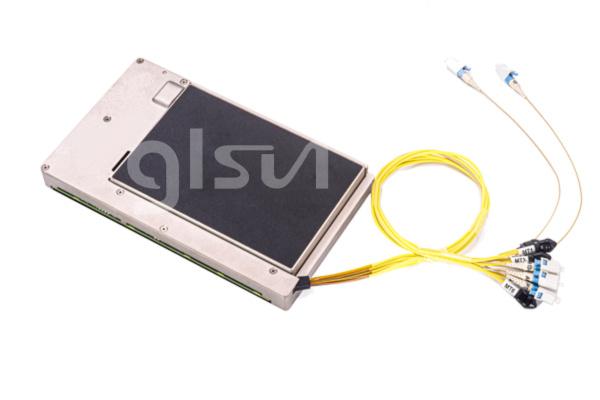LCoS vs MEMS-Based WSS
2025-03-28
Wavelength Selective Switches (WSS) are critical components in modern Reconfigurable Optical Add-Drop Multiplexers (ROADMs) used in dense wavelength-division multiplexing (DWDM) networks. Two primary technologies dominate WSS implementations: Liquid Crystal on Silicon (LCoS) and Micro-Electro-Mechanical Systems (MEMS). Each has distinct advantages and trade-offs in terms of performance, scalability, and cost.
Liquid Crystal on Silicon (LCoS) technology employs a reflective spatial light modulator (SLM) in which liquid crystal cells modulate light phase based on an electrical signal. This enables dynamic wavelength control and beam steering without mechanical movement. The phase-only modulation of LCoS enables precise and continuous tunability, making it well-suited for flexible-grid architectures where bandwidth allocation must be adjusted dynamically. However, due to the polarization dependency of liquid crystals, additional polarization diversity optics are required to ensure consistent performance across all signals.
Micro-Electro-Mechanical Systems (MEMS) technology, on the other hand, utilizes micromirrors to physically redirect optical signals to different output ports. The micromirrors can tilt in multiple directions, offering precise control over wavelength routing. The inherently low insertion loss and high optical efficiency of MEMS systems make them highly effective in applications requiring high power budgets and minimal signal degradation. However, since MEMS relies on mechanical motion, there is a small but notable possibility of wear and tear over prolonged use, particularly in systems that require frequent switching operations.
LCoS-based WSS offers highly flexible and fine-grained wavelength selection, as it can control phase modulation at the pixel level. This enables arbitrary spectral shaping and dynamic reconfiguration of channel bandwidths, making it ideal for flexible-grid DWDM networks. In contrast, MEMS-based WSS relies on fixed passbands with predefined filter shapes, making it less adaptable to dynamic spectrum allocation but well-suited for standard fixed-grid networks.
In terms of insertion loss and optical performance, LCoS-based WSS generally exhibits higher insertion loss due to diffraction effects and polarization sensitivity, requiring additional polarization diversity optics. MEMS-based WSS, however, benefits from lower insertion loss and polarization-dependent loss (PDL), as it primarily relies on direct reflection with minimal optical path complexity. The lower optical losses of MEMS make it attractive for networks with stringent power budgets, whereas LCoS, despite higher losses, provides a degree of spectral agility that is crucial for modern flexible networks.
Switching speed is another key differentiator. LCoS-based WSS has a response time in the millisecond range due to the liquid crystal switching dynamics. However, since it has no moving parts, it offers excellent long-term reliability. MEMS-based WSS, in contrast, provides much faster switching in the microsecond range, making it suitable for latency-sensitive applications, although its mechanical components introduce potential long-term wear concerns. In network applications where rapid reconfiguration of optical paths is required, such as in dynamic optical networking, MEMS technology may provide a performance advantage due to its lower latency.
Scalability is where LCoS-based WSS holds a strong advantage. With its two-dimensional beam steering capability, it can support a higher number of ports and easily scale to high-degree ROADMs. MEMS-based WSS, while effective for moderate port counts, faces limitations due to the physical size of micromirror arrays, making high-port-count implementations more challenging. The pixel-based control in LCoS technology allows for finer resolution in spectral tuning, which becomes increasingly important as networks evolve towards a more flexible-grid paradigm. In contrast, MEMS-based WSS scales well in fixed-grid configurations but encounters practical limitations in highly meshed architectures with large port counts.
When it comes to cost and complexity, LCoS-based WSS has a higher initial cost due to the sophisticated control electronics and polarization management required. Additionally, its operation relies heavily on software for beam steering and wavelength control. The advanced digital signal processing (DSP) required for LCoS operation adds another layer of complexity, although it also provides extensive configurability. MEMS-based WSS, on the other hand, has a lower manufacturing cost per unit, benefiting from mature MEMS fabrication processes. Its simpler hardware design also results in a potentially lower overall system cost, especially in deployments where spectral flexibility is not a primary requirement.
Both LCoS-based and MEMS-based WSS technologies offer unique advantages that cater to different optical networking requirements. LCoS-based WSS provides superior spectral flexibility, higher scalability, and adaptability to flexible-grid architectures but comes with higher cost and insertion loss. It is ideal for operators seeking to maximize spectral efficiency and dynamically adjust bandwidth allocations. MEMS-based WSS, in contrast, excels in low insertion loss, fast switching speed, and cost-effectiveness, making it ideal for latency-sensitive and budget-conscious applications. The choice between these technologies ultimately depends on network operators' specific needs regarding spectral control, performance, and scalability.
As optical networks continue evolving to accommodate higher data rates and more flexible service provisioning, both LCoS and MEMS technologies will play critical roles in shaping the future of WSS-based optical switching. Operators must carefully evaluate their network requirements to determine which technology best aligns with their long-term scalability and performance goals.








